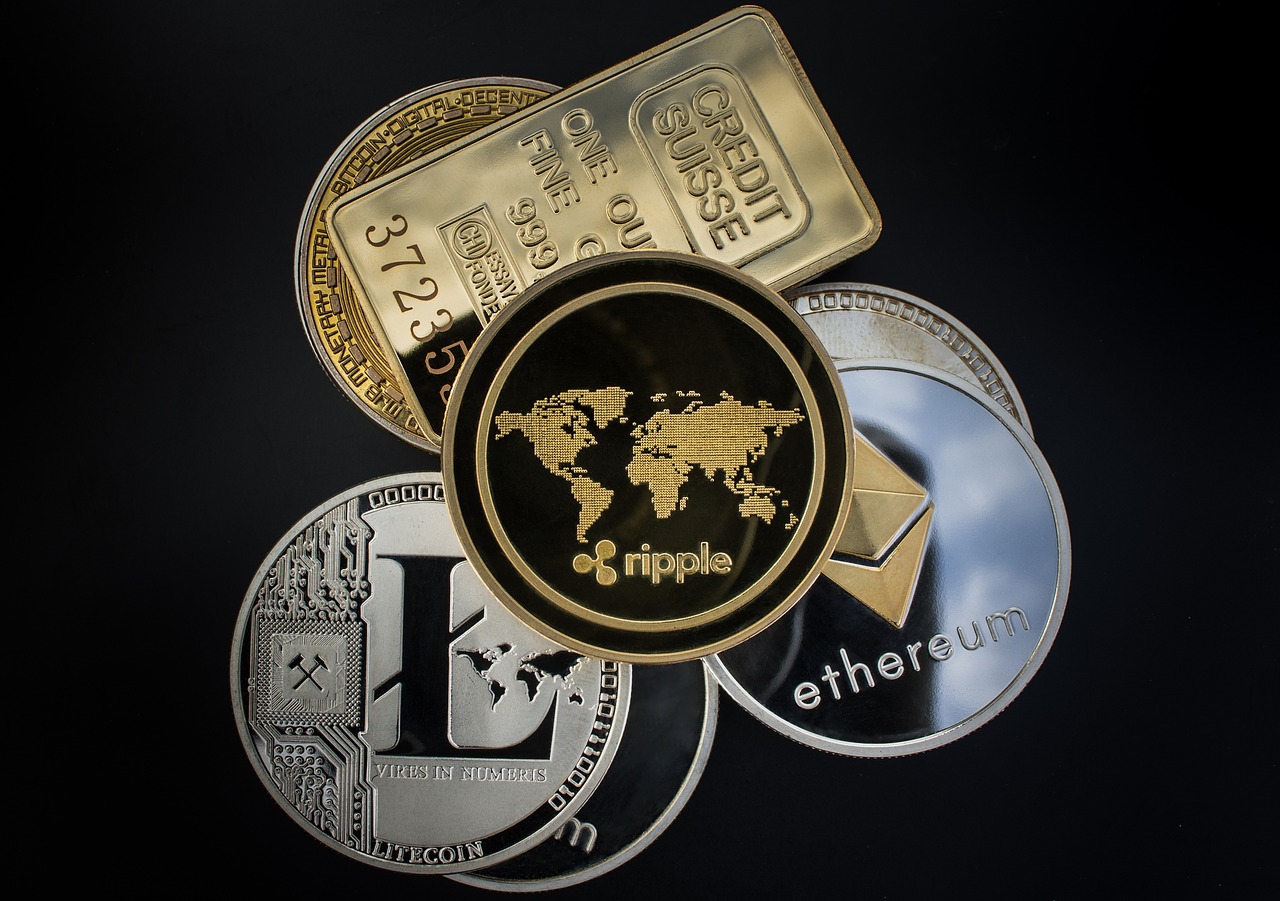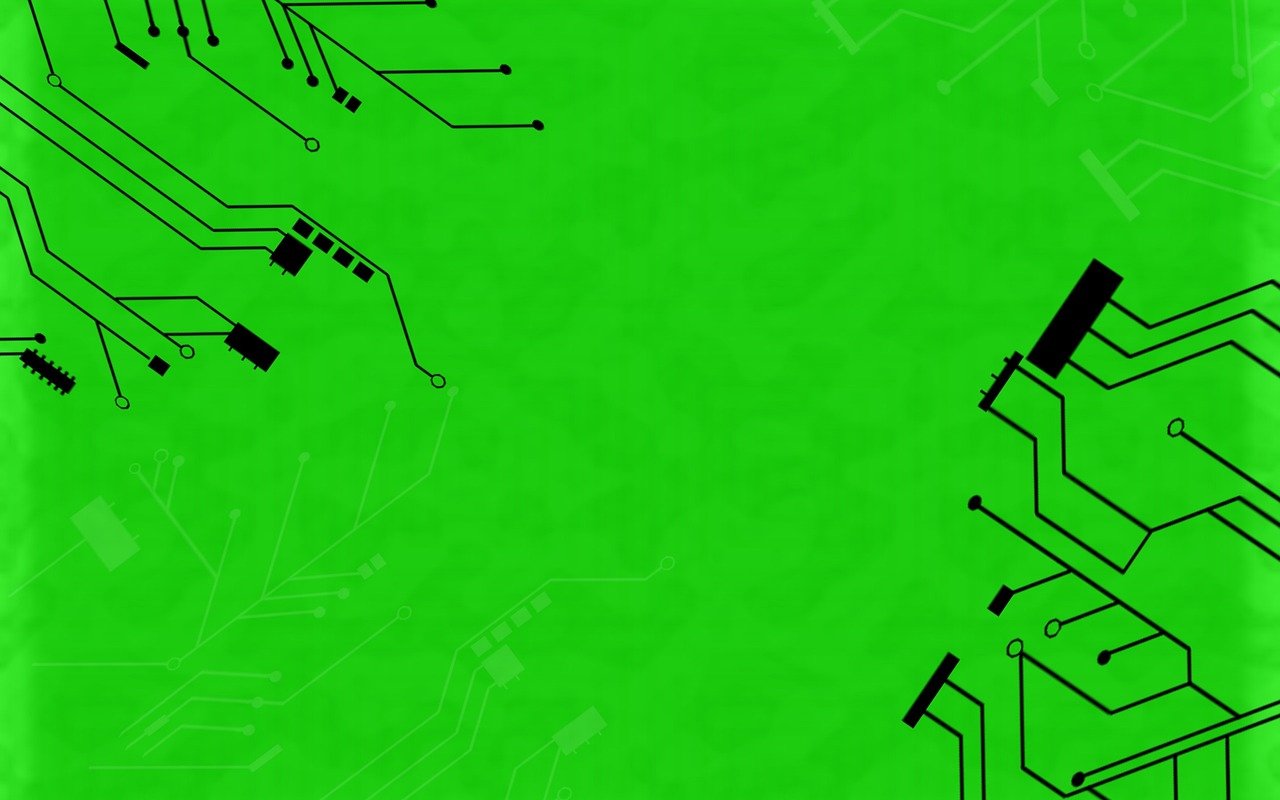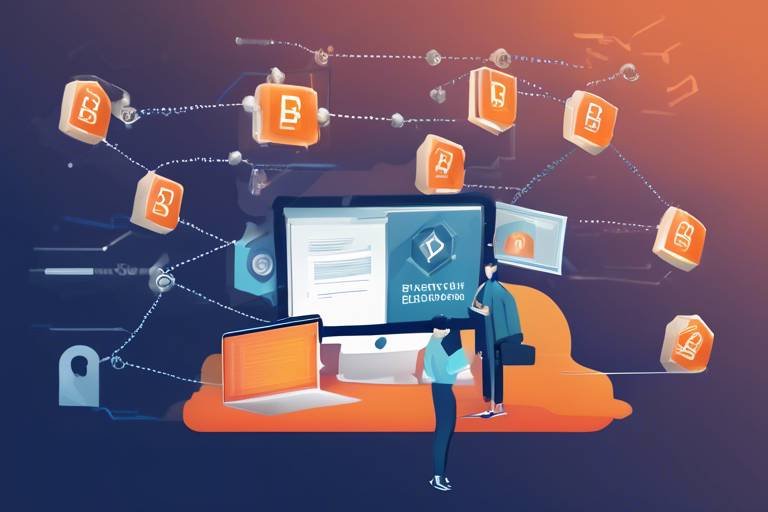How Blockchain is Enabling Secure File Sharing
In today’s digital age, the way we share files has evolved tremendously, but with this evolution comes the pressing need for enhanced security and privacy. Enter blockchain technology, a game-changer that’s not just about cryptocurrencies but is also paving the way for secure file sharing. Imagine a world where your sensitive documents, photos, and data are shared without the fear of interception or unauthorized access. Sounds like a dream, right? Well, with blockchain, this dream is becoming a reality.
Blockchain operates on a decentralized network, meaning there’s no single point of failure. This is akin to having multiple copies of a book spread across various libraries; even if one library is compromised, the book remains safe in others. This decentralization is crucial for secure file sharing, as it ensures that files are not stored in one vulnerable location. Instead, they are distributed across a network of computers, or nodes, which collaborate to verify and record transactions on a public ledger.
Moreover, blockchain technology brings transparency and immutability to file sharing. Once a file is shared and recorded on the blockchain, it cannot be altered or deleted without consensus from the network. This is like having a permanent record in a library that cannot be edited or erased. Such features not only protect the integrity of the files but also build trust among users. When you share a document through blockchain, you can be confident that it remains unchanged and secure.
But how does this all translate into practical benefits for everyday users? Well, blockchain offers enhanced security features that are vital in today’s data-driven world. With cryptographic techniques at its core, blockchain ensures that files are encrypted before they are shared. This means that even if someone intercepts your file, they won’t be able to read it without the proper decryption key. Think of it as sending a locked box; only the recipient with the right key can open it. This level of security is crucial for sectors like healthcare and finance, where sensitive information is often exchanged.
Additionally, using blockchain for file sharing can significantly reduce costs associated with traditional methods. By eliminating intermediaries and streamlining processes, businesses can save both time and money. Imagine not having to pay hefty fees to third-party services just to share a document securely. Instead, blockchain allows for peer-to-peer sharing, making it not only more efficient but also more economical.
As exciting as these prospects are, it’s important to acknowledge that implementing blockchain for file sharing isn’t without its challenges. Issues like scalability, regulatory concerns, and user adoption need to be addressed for blockchain to reach its full potential. However, as more industries begin to recognize its benefits, we can expect to see innovative solutions that tackle these challenges head-on.
- What is blockchain technology?
Blockchain technology is a decentralized digital ledger that records transactions across multiple computers in a way that ensures the security and integrity of the data.
- How does blockchain enhance file security?
Blockchain enhances file security through cryptographic techniques, decentralization, and immutability, making it difficult for unauthorized users to access or alter shared files.
- What industries are using blockchain for file sharing?
Industries such as healthcare, finance, and legal services are increasingly adopting blockchain technology for secure file sharing.
- Are there any challenges with blockchain implementation?
Yes, challenges include scalability, regulatory concerns, and the need for broader user adoption.

The Basics of Blockchain Technology
Understanding blockchain technology is crucial for grasping its application in secure file sharing. At its core, blockchain is a decentralized digital ledger that records transactions across multiple computers. This means that no single entity has control over the entire chain, making it resistant to tampering and fraud. Imagine a public library where every book is a record of a transaction; anyone can check out a book, but no one can alter the content without everyone else noticing. This is the essence of blockchain — a shared record that is constantly verified by its users.
Three fundamental principles underpin blockchain technology: decentralization, transparency, and immutability. Decentralization ensures that power is distributed among all participants, reducing the risk of manipulation. Transparency allows all users to view the same information, fostering trust and accountability. Immutability means that once a transaction is recorded, it cannot be altered or deleted, which is essential for maintaining the integrity of the data. Together, these principles create a robust framework for secure file sharing.
To further illustrate these concepts, consider the following table that summarizes the key features of blockchain technology:
| Feature | Description |
|---|---|
| Decentralization | No central authority controls the network, enhancing security and trust. |
| Transparency | All participants can access the same information, reducing the chances of fraud. |
| Immutability | Once data is recorded, it cannot be changed, ensuring data integrity. |
In the context of file sharing, these principles mean that files can be shared securely without the need for a central server. Instead of relying on a single point of control, users can share files directly with one another, knowing that the data is protected against unauthorized changes. This is particularly important in industries that handle sensitive information, where the risk of data breaches can have severe consequences.
Moreover, the technology utilizes cryptographic techniques to secure data. Each transaction is encrypted and linked to the previous one, forming a chain of blocks. This not only protects the data but also ensures that any attempt to alter a block would require altering all subsequent blocks, making such attempts virtually impossible. Think of it like a chain of safes; if you want to get into the second safe, you first have to break into the first one, and good luck with that!
In summary, the basics of blockchain technology revolve around its decentralized nature, transparency, and immutability. These features are what make it a game-changer for secure file sharing, providing users with a reliable and secure way to share and store data. As we delve deeper into the benefits and challenges of this technology, it becomes clear that blockchain is not just a passing trend but a revolutionary force that could redefine how we think about data security.

Benefits of Blockchain in File Sharing
Blockchain technology is transforming the landscape of file sharing, offering a plethora of benefits that are hard to ignore. Imagine a world where your files are not only shared but are also protected by the most advanced security measures available. This is what blockchain brings to the table. The decentralized nature of blockchain allows for a more secure and efficient way to share files, eliminating the risks associated with traditional methods. With blockchain, users can enjoy enhanced security, reduced costs, and increased efficiency, making it a game changer in the digital age.
One of the most significant advantages of using blockchain for file sharing is enhanced security. Unlike conventional file-sharing systems that rely on a central server, blockchain operates on a decentralized network. This means that files are distributed across multiple nodes, making it incredibly difficult for unauthorized users to access or tamper with them. In fact, each file is encrypted and linked to a unique cryptographic hash, ensuring that any alteration would be immediately detectable. This level of security is akin to having a bank vault for your digital files—only those with the right keys can access it.
Furthermore, blockchain reduces costs associated with file sharing. Traditional methods often involve intermediaries, such as cloud storage providers, which can add fees and complexity to the process. With blockchain, users can directly share files with one another without needing a middleman, significantly cutting down on costs. This direct interaction not only saves money but also speeds up the entire process. Think of it as skipping the line at a coffee shop; you get your coffee faster and without the extra charge!
In addition to security and cost savings, blockchain also increases efficiency. The use of smart contracts—self-executing contracts with the terms of the agreement directly written into code—can automate various aspects of file sharing. For example, a smart contract can automatically grant access to a file once certain conditions are met, eliminating the need for manual intervention. This automation streamlines workflows and allows users to focus on what really matters instead of getting bogged down by tedious tasks.
To summarize the benefits of blockchain in file sharing, consider the following:
- Enhanced Security: Files are encrypted and decentralized, making unauthorized access nearly impossible.
- Cost Efficiency: Eliminates the need for intermediaries, reducing overall costs.
- Increased Efficiency: Automation through smart contracts speeds up processes and reduces manual workload.
In conclusion, the benefits of blockchain in file sharing are not just theoretical; they are practical solutions to real-world problems. As we continue to navigate the complexities of digital data, embracing blockchain technology could very well be the key to a more secure, efficient, and cost-effective future.

Enhanced Security Features
When it comes to file sharing, one of the most pressing concerns is security. In a world where data breaches and unauthorized access seem to be the norm, the offered by blockchain technology are nothing short of revolutionary. Imagine a vault that not only locks away your most precious documents but also ensures that only the right people can access them, and that every interaction with those documents is recorded and verifiable. This is precisely what blockchain does for file sharing.
At the heart of blockchain's security is its use of cryptographic techniques. Each file shared on a blockchain is hashed, which means it's converted into a fixed-length string of characters that uniquely represents the original file. This hash is then stored in a decentralized manner across a network of computers, making it incredibly difficult for anyone to alter the file without detection. If someone were to try and tamper with the file, the hash would change, alerting users to the unauthorized modification. This level of security is akin to having a digital fingerprint for every document, ensuring that any changes are immediately noticeable.
Moreover, the decentralized nature of blockchain technology means that there is no single point of failure. Traditional file sharing methods often rely on central servers, which can be vulnerable to attacks. In contrast, blockchain distributes data across a network of nodes, making it nearly impossible for hackers to compromise the entire system. If one node goes down, the others continue to function, ensuring that files remain accessible and secure. This decentralization not only enhances security but also fosters a sense of trust among users, as they can verify the authenticity of shared files without relying on a central authority.
Another critical aspect of blockchain's security features is its use of encryption techniques. Files shared on a blockchain can be encrypted using various algorithms, ensuring that only authorized users can access the content. For instance, symmetric encryption allows users to share a single key for both encrypting and decrypting the file, while asymmetric encryption uses a pair of keys—one public and one private. This dual approach to encryption enhances security by providing multiple layers of protection, making it exceedingly difficult for unauthorized individuals to gain access.
To illustrate the effectiveness of these security features, consider the following table that outlines the key components of blockchain security:
| Security Feature | Description |
|---|---|
| Cryptographic Hashing | Transforms files into unique fixed-length strings, making unauthorized changes detectable. |
| Decentralization | Distributes data across multiple nodes, eliminating single points of failure. |
| Encryption | Secures files using advanced algorithms, ensuring only authorized access. |
In conclusion, the enhanced security features of blockchain technology offer a robust solution for secure file sharing. By employing cryptographic techniques, decentralization, and advanced encryption methods, blockchain not only protects sensitive information but also instills trust among users. As we continue to navigate the digital landscape, these features will play a crucial role in safeguarding our data and ensuring that file sharing remains a secure and reliable process.
- What is blockchain technology? Blockchain is a decentralized digital ledger that securely records transactions across multiple computers.
- How does blockchain enhance file sharing security? It utilizes cryptographic techniques, decentralization, and encryption to protect files from unauthorized access and tampering.
- Can blockchain be used in any industry for file sharing? Yes, blockchain technology can be applied in various industries, including healthcare, finance, and more, to ensure secure file sharing.

Decentralization and Data Integrity
Decentralization is one of the cornerstones of blockchain technology, and it plays a pivotal role in ensuring data integrity. Imagine a traditional file-sharing system where all your data resides on a single server. If that server goes down or, worse, is compromised, your files are at risk. However, with blockchain, your data is distributed across a network of nodes, making it significantly more resilient. Each node holds a copy of the entire blockchain, which means that even if one node fails, the others continue to maintain the integrity of the data.
In this decentralized structure, every transaction or file-sharing event is recorded in a public ledger that is visible to all participants. This transparency ensures that once data is entered into the blockchain, it cannot be altered or deleted without consensus from the network. This immutability is crucial for maintaining trust among users, as it provides a verifiable history of all transactions. In essence, decentralization not only enhances security but also fosters a greater sense of accountability.
Moreover, the decentralized nature of blockchain minimizes the risk of a single point of failure. In conventional systems, a hacker could target a central server to manipulate or steal data. However, in a decentralized system, the hacker would need to breach multiple nodes simultaneously, which is a daunting task. This distributed approach effectively acts as a fortress for your files, safeguarding them from unauthorized access and ensuring that the integrity of the data remains intact.
To illustrate the importance of decentralization in maintaining data integrity, consider the following key points:
- Redundancy: Multiple copies of data across various nodes ensure that even if one node fails, the data remains accessible and secure.
- Consensus Mechanisms: Changes to the data require agreement among nodes, making unauthorized alterations nearly impossible.
- Auditability: Every transaction is traceable, allowing users to verify the authenticity and integrity of the files shared.
In conclusion, decentralization is not just a buzzword in blockchain technology; it is a fundamental principle that enhances data integrity. By distributing data across a network of nodes, blockchain ensures that files are secure, tamper-proof, and accessible, thus revolutionizing the way we think about file sharing. As we continue to explore the potential of blockchain, it becomes clear that decentralization is key to building a more secure digital future.
Q1: What is blockchain technology?
A1: Blockchain technology is a decentralized digital ledger that records transactions across multiple computers. It ensures that the recorded information cannot be altered retroactively, providing a secure and transparent way to share data.
Q2: How does decentralization improve data integrity?
A2: Decentralization improves data integrity by distributing data across multiple nodes, making it less vulnerable to attacks or failures. Each node holds a copy of the data, ensuring that it remains accessible and secure even if some nodes go offline.
Q3: Can data on a blockchain be changed?
A3: No, once data is entered into the blockchain, it cannot be changed or deleted without consensus from the network, ensuring that the data remains immutable and trustworthy.
Q4: What industries benefit from blockchain technology?
A4: Various industries benefit from blockchain technology, including healthcare for secure patient data sharing, financial services for secure transactions, and supply chain management for tracking products.

Encryption Techniques Used
When it comes to secure file sharing through blockchain technology, encryption is the unsung hero that ensures our data remains private and protected. Imagine sending a postcard versus sending a sealed letter; the latter offers much more confidentiality, just like how encryption works in the digital world. In blockchain, encryption transforms sensitive information into a format that is unreadable without the correct decryption key. This process not only secures files but also builds trust among users who are sharing information.
There are several encryption techniques employed in blockchain to maintain the integrity and confidentiality of data. One of the most widely used methods is Symmetric Encryption, where the same key is used for both encryption and decryption. This method is fast and efficient, making it ideal for encrypting large files. However, the challenge lies in securely sharing the key between parties, as anyone with access to the key can decrypt the data. Another commonly utilized technique is Asymmetric Encryption, which uses a pair of keys: a public key for encryption and a private key for decryption. This method enhances security significantly since the private key never needs to be shared.
Moreover, blockchain often employs hashing algorithms as part of its encryption strategy. Hashing takes an input (or 'message') and produces a fixed-size string of characters, which is typically a digest that appears random. This process is irreversible, meaning once data is hashed, it cannot be converted back to its original form. This is particularly useful for verifying the integrity of files shared on the blockchain. If even a single character in the original data changes, the hash will change drastically, alerting users to potential tampering.
Here’s a quick overview of some popular encryption techniques used in blockchain:
| Encryption Technique | Description | Use Case |
|---|---|---|
| Symmetric Encryption | Same key for encryption and decryption. | Fast encryption of large files. |
| Asymmetric Encryption | Uses a public and private key pair. | Securely sharing files without sharing keys. |
| Hashing | Transforms data into a fixed-size string. | Verifying data integrity. |
In conclusion, the combination of these encryption techniques creates a robust framework for secure file sharing on blockchain. As we continue to navigate an increasingly digital world, the importance of encryption cannot be overstated. It acts as a guardian, ensuring that our data remains confidential and tamper-proof, allowing us to share information with confidence.
- What is the main purpose of encryption in blockchain?
Encryption in blockchain serves to protect sensitive data from unauthorized access, ensuring that only intended recipients can read the information shared.
- How does symmetric encryption differ from asymmetric encryption?
Symmetric encryption uses the same key for both encryption and decryption, while asymmetric encryption uses a pair of keys—one public and one private—for secure communication.
- Can encrypted data be hacked?
While encryption significantly increases security, no system is completely hack-proof. However, strong encryption methods make it extremely difficult for unauthorized users to access the data.
- What role does hashing play in blockchain security?
Hashing ensures data integrity by creating a unique fingerprint of the data. If the data changes, the hash changes, alerting users to potential tampering.

Challenges in Implementing Blockchain
While the potential of blockchain technology for secure file sharing is immense, it is not without its challenges. One of the most significant hurdles is scalability. As more users and transactions are added to the blockchain, the system can become congested, leading to slower processing times. Imagine trying to get through a crowded subway station during rush hour; the more people there are, the longer it takes to get to your destination. Similarly, as blockchain networks grow, they can struggle to maintain efficiency, which can deter organizations from adopting this technology.
Another pressing issue is regulatory concerns. The legal landscape surrounding blockchain is still evolving, and many governments are grappling with how to regulate this technology. For businesses, this uncertainty can create a risky environment. Companies may hesitate to invest in blockchain solutions if they fear future regulations could hinder their operations or require costly adjustments. It's akin to building a house without knowing the zoning laws; you might end up with a beautiful structure that you can't use.
User adoption is also a critical challenge. Many individuals and organizations are still unfamiliar with blockchain technology, which can lead to skepticism. The learning curve can be steep, and the perception that blockchain is only for tech-savvy users can act as a barrier. To overcome this, educational initiatives are essential. Just as you wouldn't jump into a new sport without understanding the rules, users need to be educated about how blockchain works and its benefits to feel comfortable using it.
Moreover, the energy consumption associated with some blockchain networks, particularly those using proof-of-work consensus mechanisms, raises environmental concerns. Critics argue that the energy-intensive nature of these systems could lead to a negative impact on the planet. It's like driving a gas-guzzler in a world that's increasingly focused on sustainability; the costs may outweigh the benefits. This has led to the exploration of alternative consensus mechanisms, such as proof-of-stake, which aim to reduce energy consumption while maintaining security.
In summary, while blockchain technology offers revolutionary potential for secure file sharing, it faces significant challenges that need to be addressed. Scalability issues, regulatory uncertainties, user adoption barriers, and environmental concerns are all factors that could impede its widespread implementation. However, with ongoing advancements and a growing understanding of the technology, solutions to these challenges are likely to emerge, paving the way for a more secure and efficient future.
- What is blockchain technology? Blockchain is a decentralized digital ledger that records transactions across many computers in a way that the registered transactions cannot be altered retroactively.
- How does blockchain enhance file sharing security? By using cryptographic techniques and decentralization, blockchain ensures that files are protected from unauthorized access and tampering.
- What are the main challenges of implementing blockchain? Key challenges include scalability, regulatory concerns, user adoption, and energy consumption.
- Can blockchain be used in industries other than finance? Yes, blockchain has applications in various sectors, including healthcare, supply chain management, and real estate.

Real-World Applications of Blockchain
Blockchain technology is not just a buzzword; it’s a game-changer that has found its way into various industries, revolutionizing how we think about secure file sharing. Imagine a world where sensitive information is not only shared seamlessly but also protected against unauthorized access and tampering. Well, that world is already here! From healthcare to finance, blockchain is paving the way for innovative applications that enhance security, transparency, and efficiency.
In the healthcare sector, for instance, blockchain is transforming the way patient data is shared. Traditionally, sharing medical records has been fraught with challenges, including data breaches and fragmented systems. However, with blockchain, patient data can be securely stored and shared among authorized parties without the risk of unauthorized access. This is achieved through the use of decentralized ledgers that ensure only those with the right permissions can access sensitive information. A notable example is the implementation of blockchain by companies like Guardtime, which has successfully integrated this technology to secure patient data, ensuring that medical records remain immutable and easily accessible to healthcare providers.
Similarly, the financial services industry is reaping the benefits of blockchain technology. Financial institutions are leveraging blockchain to enhance the security and transparency of transactions. By utilizing a decentralized ledger, banks can reduce fraud and streamline processes, ultimately leading to lower operational costs. For example, Ripple has developed a blockchain-based payment protocol that allows for real-time cross-border transactions, significantly reducing the time and cost associated with traditional banking methods. This not only enhances the user experience but also builds trust among clients, as transactions are recorded transparently and cannot be altered retroactively.
Moreover, blockchain is making waves in supply chain management. Companies are increasingly adopting this technology to track products from origin to destination. By using blockchain, businesses can ensure that every step of the supply chain is recorded and verified, thus enhancing accountability and reducing the risk of counterfeit products. For instance, IBM has collaborated with various companies to implement blockchain solutions that provide end-to-end visibility in supply chains, ensuring that consumers receive authentic products.
To illustrate the impact of blockchain in these sectors, let’s take a look at the following table summarizing some key applications:
| Industry | Application | Benefits |
|---|---|---|
| Healthcare | Secure patient data sharing | Enhanced data integrity and privacy |
| Financial Services | Real-time cross-border transactions | Reduced fraud and lower operational costs |
| Supply Chain | Tracking product authenticity | Increased accountability and reduced counterfeiting |
As we can see, the applications of blockchain are vast and varied, showcasing its potential to transform industries. The ability to share files securely while maintaining privacy and data integrity is not just a theoretical concept; it’s a reality that is being implemented today. The future of blockchain in secure file sharing looks promising, with ongoing innovations and developments that will likely expand its reach even further.
Q1: What is blockchain technology?
A1: Blockchain is a decentralized digital ledger that records transactions across multiple computers, ensuring that the data cannot be altered retroactively. This technology enhances security and transparency, making it ideal for secure file sharing.
Q2: How does blockchain improve data security?
A2: Blockchain uses cryptographic techniques and decentralized networks to protect data from unauthorized access and tampering, ensuring that only authorized users can access sensitive information.
Q3: Are there any challenges in implementing blockchain for file sharing?
A3: Yes, challenges include scalability issues, regulatory concerns, and the need for user adoption. However, ongoing developments are addressing these obstacles.

Case Study: Healthcare Sector
The healthcare sector is one of the most critical industries where data security and privacy are paramount. With the increasing amount of sensitive patient information being shared among various stakeholders—hospitals, clinics, laboratories, and insurance companies—there's an urgent need for a robust system that can ensure the integrity and confidentiality of this data. Enter blockchain technology, a game-changer that is revolutionizing how healthcare organizations manage and share information.
One of the most compelling examples of blockchain's impact in healthcare can be seen in patient data management. Traditionally, patient records are stored in centralized databases, making them vulnerable to data breaches and unauthorized access. Blockchain, with its decentralized nature, mitigates these risks significantly. By allowing patient data to be stored across a network of computers, it ensures that no single entity has complete control over the information. This decentralization not only enhances security but also fosters trust among patients and healthcare providers.
Moreover, blockchain's transparency feature allows for real-time tracking of patient data. For instance, when a patient visits a new doctor, they can grant access to their medical history stored on the blockchain without the need for cumbersome paperwork or lengthy authorization processes. This seamless sharing of information not only improves patient care but also reduces the chances of medical errors.
To illustrate the effectiveness of blockchain in healthcare, let's take a look at a few notable implementations:
- MedRec: Developed by MIT, MedRec is a decentralized health record system that enables patients to control their own medical data while allowing healthcare providers to access necessary information securely.
- Guardtime: This company has partnered with Estonia's eHealth Foundation to secure patient records using blockchain technology, ensuring that only authorized personnel can access sensitive health data.
- Chronicled: This platform uses blockchain to streamline the supply chain for pharmaceuticals, ensuring that drugs are authentic and safely distributed.
These examples showcase the transformative potential of blockchain in enhancing patient data security. However, the implementation of blockchain in healthcare isn't without its challenges. Issues such as regulatory compliance, interoperability with existing systems, and the need for widespread adoption among healthcare professionals must be addressed. Nevertheless, the benefits of blockchain in securing patient data and improving healthcare delivery are undeniable.
In conclusion, as the healthcare sector continues to evolve, the integration of blockchain technology represents a significant step forward in ensuring data security and privacy. By leveraging the unique features of blockchain, healthcare organizations can not only protect sensitive patient information but also foster a more efficient and transparent system that ultimately leads to better patient outcomes.
1. How does blockchain enhance data security in healthcare?
Blockchain enhances data security by decentralizing the storage of patient information, making it less vulnerable to breaches. It uses cryptographic techniques to ensure that only authorized users can access sensitive data.
2. What are the challenges of implementing blockchain in healthcare?
Some challenges include regulatory compliance, the need for interoperability with existing systems, and gaining acceptance from healthcare professionals and organizations.
3. Can patients control their own medical records using blockchain?
Yes, blockchain technology allows patients to have control over their medical records, enabling them to grant access to healthcare providers as needed while maintaining their privacy.
4. Are there any successful examples of blockchain in healthcare?
Yes, projects like MedRec and Guardtime demonstrate successful implementations of blockchain in managing and securing patient data effectively.

Case Study: Financial Services
The financial services industry is no stranger to innovation, and with the advent of blockchain technology, it has found a powerful ally in enhancing security and transparency. Imagine a world where every transaction is not only swift but also unalterable and verifiable. That’s the promise blockchain brings to the table. Financial institutions are leveraging this technology to create a safer environment for their clients, significantly reducing the risks associated with fraud and data breaches.
One of the standout examples of blockchain implementation in finance is the use of smart contracts. These are self-executing contracts with the terms of the agreement directly written into code. They automatically execute transactions when predetermined conditions are met, eliminating the need for intermediaries and minimizing human error. For instance, if you were to sell a car, a smart contract could automatically transfer ownership and funds once both parties fulfill their obligations. This not only speeds up the process but also ensures that both parties are protected against fraud.
Furthermore, blockchain's decentralized ledger technology offers unparalleled transparency. Every transaction is recorded across multiple nodes, making it nearly impossible to alter the data without consensus from the network. This feature is particularly vital in combating issues like money laundering and financial fraud. Institutions can trace the flow of funds in real-time, which enhances compliance with regulatory standards and builds trust with customers.
Let’s take a closer look at some of the major financial institutions that have embraced blockchain:
| Institution | Application | Outcome |
|---|---|---|
| JPMorgan Chase | Interbank transfers using the JPM Coin | Faster transaction times and reduced costs |
| Goldman Sachs | Tokenization of assets | Increased liquidity and accessibility for investors |
| Wells Fargo | Blockchain for cross-border payments | Enhanced security and efficiency in international transactions |
These examples illustrate how blockchain technology is not just a theoretical concept but a practical solution that is reshaping the financial landscape. By adopting blockchain, these institutions are not only improving their operational efficiency but also enhancing customer trust. In a sector where trust is paramount, the transparency and security that blockchain provides are game-changers.
However, it's essential to recognize that the journey towards widespread blockchain adoption in finance is not without its hurdles. Issues such as regulatory uncertainty, integration with existing systems, and the need for industry-wide standards must be addressed. Yet, as the technology matures, it’s clear that blockchain is paving the way for a more secure and efficient financial future.
- What is blockchain technology? Blockchain is a decentralized digital ledger that records transactions across multiple computers, ensuring that the recorded transactions cannot be altered retroactively.
- How does blockchain enhance security in financial services? By using cryptographic techniques and decentralized networks, blockchain protects data from unauthorized access and tampering.
- What are smart contracts? Smart contracts are self-executing contracts with the terms of the agreement directly written into code, allowing for automatic execution when conditions are met.
- What challenges does blockchain face in finance? Key challenges include regulatory concerns, integration with legacy systems, and the need for broader industry acceptance.
Frequently Asked Questions
- What is blockchain technology?
Blockchain technology is a decentralized digital ledger that records transactions across many computers. This ensures that the recorded transactions cannot be altered retroactively, enhancing security and trust.
- How does blockchain enhance file sharing security?
Blockchain enhances file sharing security through its use of cryptographic techniques and a decentralized network. This means that files are protected from unauthorized access and tampering, making it much harder for malicious actors to compromise data.
- What are the benefits of using blockchain for file sharing?
The benefits of using blockchain for file sharing include enhanced security, reduced costs, and increased efficiency. By eliminating intermediaries and providing a secure platform, blockchain can streamline the file sharing process significantly.
- What challenges does blockchain face in file sharing?
Despite its advantages, blockchain faces challenges like scalability, regulatory concerns, and user adoption. These issues can hinder its widespread implementation in file sharing applications.
- Can you provide examples of blockchain in real-world applications?
Yes! In the healthcare sector, blockchain is used for secure patient data sharing, ensuring privacy and accuracy. Additionally, in financial services, institutions leverage blockchain to enhance security and transparency in transactions.
- What encryption techniques are used in blockchain?
Blockchain employs various encryption methods, such as hashing and public-private key cryptography, to secure files and ensure that only authorized users can access sensitive information.
- How does decentralization contribute to data integrity?
Decentralization prevents single points of failure by distributing data across multiple nodes. This enhances trust in shared files, as no single entity has control over the entire dataset, making it harder to manipulate or corrupt information.



















